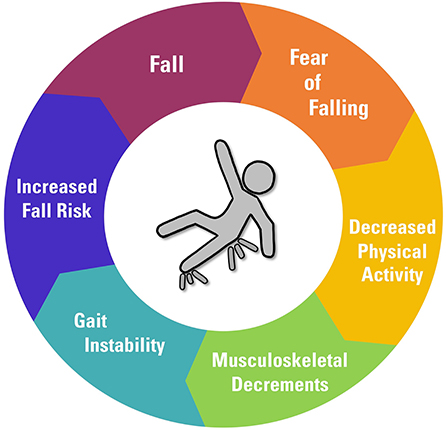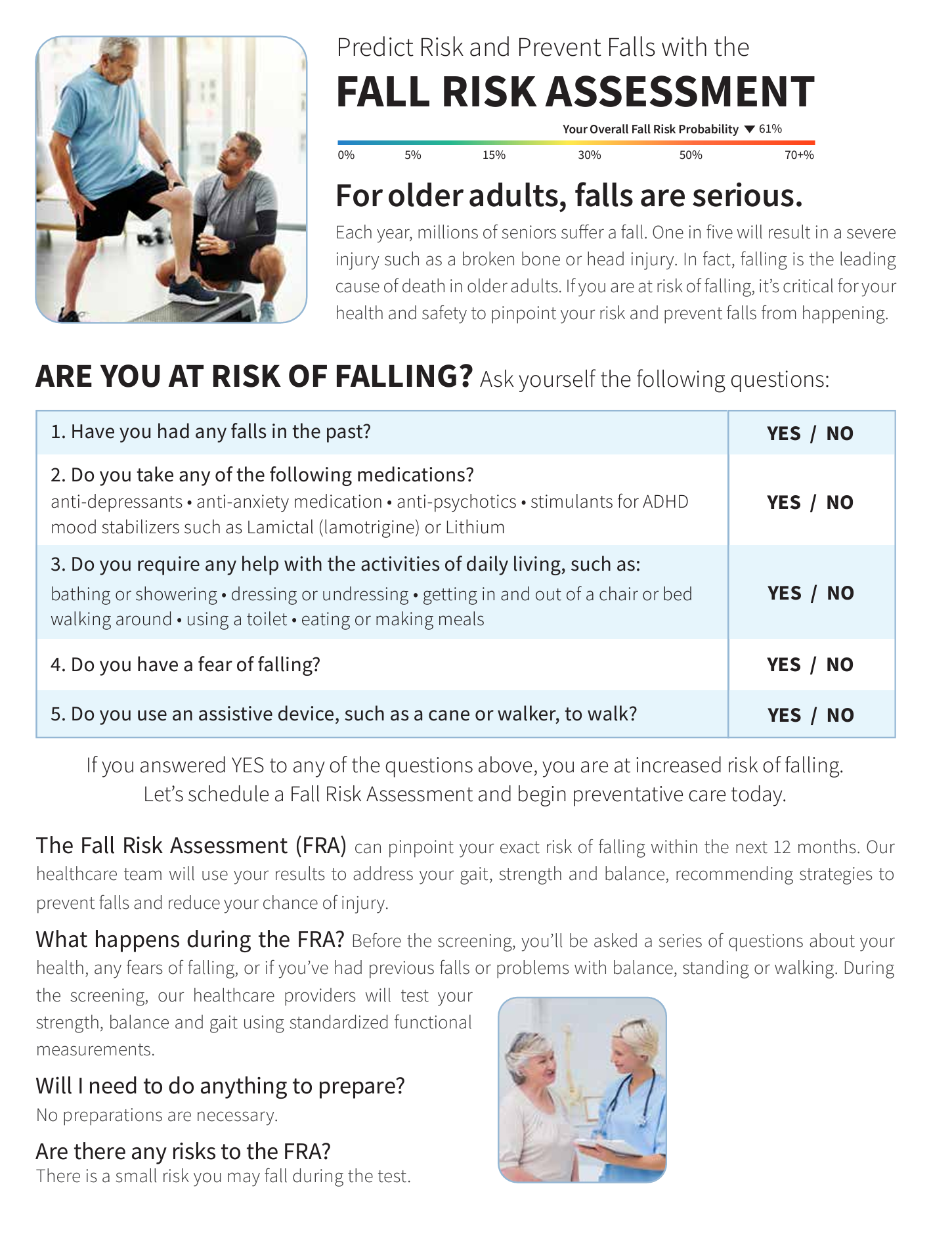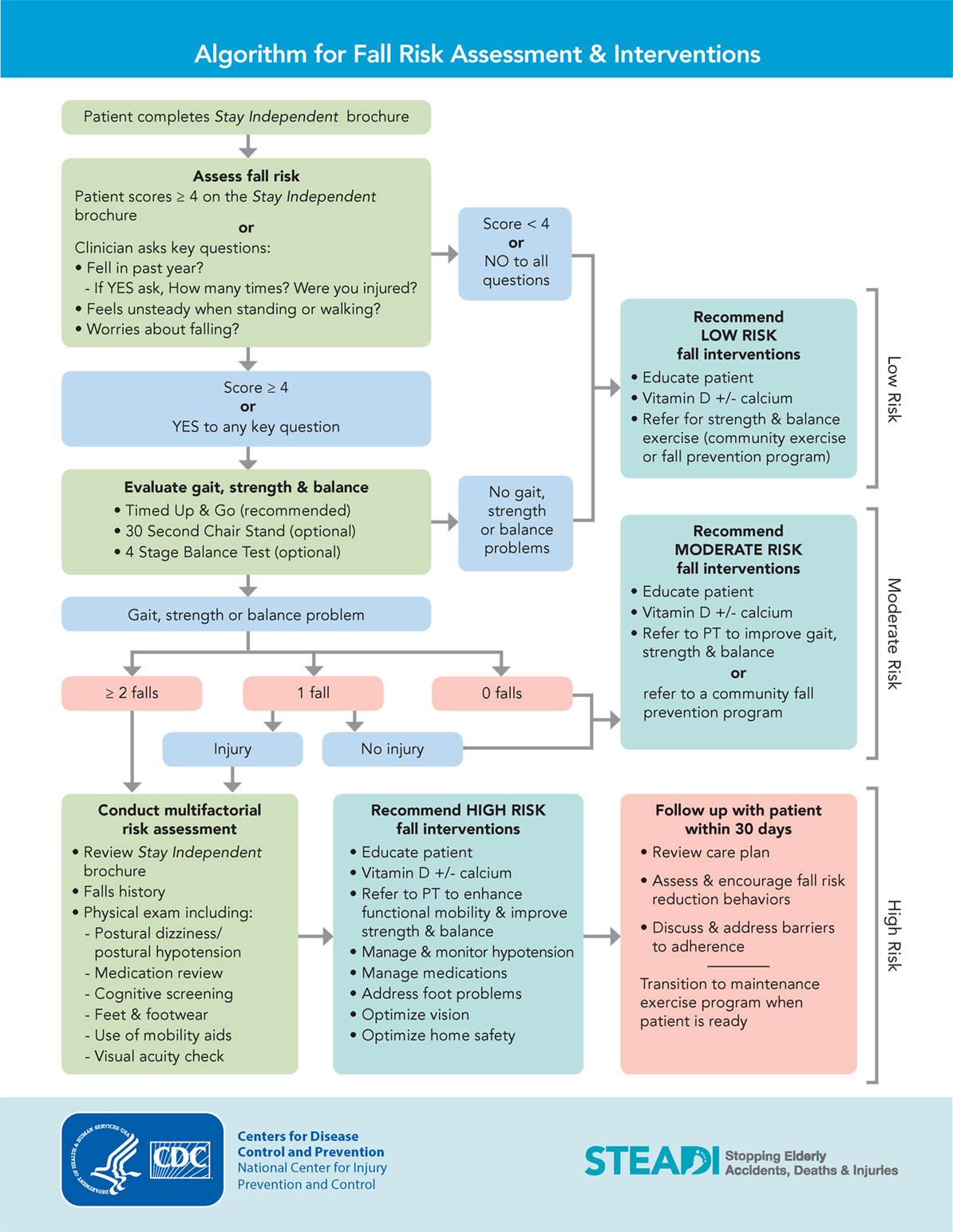Dementia Fall Risk Fundamentals Explained
Table of ContentsThe smart Trick of Dementia Fall Risk That Nobody is Talking AboutGet This Report about Dementia Fall RiskDementia Fall Risk - QuestionsThe Main Principles Of Dementia Fall Risk
A fall danger analysis checks to see how most likely it is that you will certainly fall. It is mostly provided for older adults. The evaluation typically consists of: This includes a series of inquiries concerning your overall wellness and if you've had previous falls or problems with balance, standing, and/or walking. These devices test your stamina, equilibrium, and gait (the way you walk).Treatments are suggestions that might reduce your threat of falling. STEADI consists of 3 actions: you for your risk of falling for your threat factors that can be boosted to attempt to protect against falls (for instance, balance troubles, damaged vision) to lower your risk of falling by making use of efficient techniques (for example, offering education and learning and sources), you may be asked a number of inquiries including: Have you dropped in the past year? Are you worried concerning dropping?
You'll rest down once more. Your provider will certainly examine how much time it takes you to do this. If it takes you 12 secs or even more, it may suggest you go to higher threat for a loss. This examination checks strength and balance. You'll rest in a chair with your arms went across over your upper body.
Move one foot halfway onward, so the instep is touching the big toe of your various other foot. Move one foot totally in front of the other, so the toes are touching the heel of your various other foot.
How Dementia Fall Risk can Save You Time, Stress, and Money.
A lot of drops take place as an outcome of several contributing variables; consequently, handling the risk of dropping begins with recognizing the variables that contribute to fall danger - Dementia Fall Risk. Some of the most pertinent risk aspects include: Background of prior fallsChronic medical conditionsAcute illnessImpaired gait and balance, reduced extremity weaknessCognitive impairmentChanges in visionCertain risky drugs and polypharmacyEnvironmental variables can additionally raise the threat for drops, including: Poor lightingUneven or damaged flooringWet or unsafe floorsMissing or damaged handrails and get hold of barsDamaged or poorly equipped devices, such as beds, wheelchairs, or walkersImproper use assistive devicesInadequate supervision of individuals residing in the NF, including those who display aggressive behaviorsA effective autumn threat management program needs a thorough medical evaluation, with input from all members of the interdisciplinary team

The care plan ought to likewise consist of interventions that are system-based, such as those that promote a safe setting (ideal lights, handrails, get hold of bars, etc). The performance of the treatments ought to be examined regularly, and the care strategy changed as needed to show changes in the loss threat analysis. Implementing a loss danger administration system using evidence-based best method can decrease the occurrence of drops in the NF, while limiting the capacity for fall-related injuries.
6 Easy Facts About Dementia Fall Risk Shown
The AGS/BGS guideline suggests screening all grownups aged 65 years and older for fall danger yearly. This screening contains asking people whether they have actually dropped 2 or even more times in the previous year or sought medical focus for a loss, or, if they have not dropped, whether they feel unsteady when strolling.
Individuals who have dropped when without injury must have their equilibrium and stride examined; those with stride or balance problems must obtain extra evaluation. A background of 1 loss without injury and without stride or equilibrium troubles does not warrant additional analysis beyond continued annual fall threat testing. Dementia Fall Risk. A loss threat analysis is needed as component of the Welcome to Medicare exam

The Only Guide for Dementia Fall Risk
Recording a falls history is among the quality indications for autumn avoidance and administration. A critical component of danger analysis is a medication evaluation. Several courses of medicines enhance loss danger (Table 2). Psychoactive medications particularly are independent forecasters of falls. These medicines have a tendency to be sedating, change the sensorium, and impair equilibrium and stride.
Postural hypotension can frequently be relieved by decreasing the dosage of blood pressurelowering medications and/or quiting medications that have orthostatic hypotension as a side effect. Usage of above-the-knee support tube and sleeping with the head of the bed elevated might additionally minimize postural decreases in blood stress. The advisable components of a fall-focused health examination are shown in Box 1.

A Yank time higher than Related Site or equal to 12 secs recommends high autumn threat. Being not able to stand up from a chair of knee elevation without using one's arms shows increased autumn risk.